Bruce Dowbiggin
When Russians Were Cool: How Detroit Brought Down The Wall
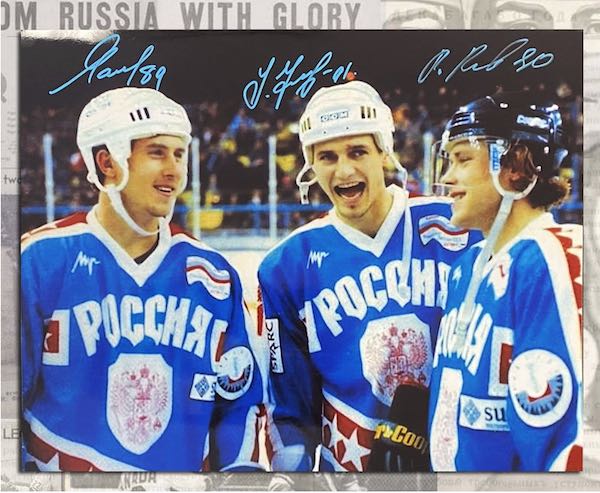
The Ukraine invasion has caused repercussions everywhere— even in hockey. The NHL, IIHF and the CHL have all responded in different ways to punish the aggression shown by Vladimir Putin. The CHL, in particular, has banned the drafting of Russians and Belorussians teenagers in this year’s bantam draft.
This overreach is all the rage with officials offended by Putin (the Metropolitan Opera fired one of its star soloists, Russian Anna Netrebko, for not condemning Putin enough). Not since the 1980s, when the dying USSR forbade the drifting on players into the NHL, has there been such distrust of Russians for political reasons.
In our new book Inexact Science, my son Evan and I recalled how the Detroit Red Wings, under chief scout Neil Smith, cracked the bias against Soviet (Russian) players in the historic 1989 draft as they poached a Hall of Fame defence man from Sweden and two Russian stars— Sergei Fedorov and Vladimir Konstantinov, in the middle rounds of that draft. And how it could have been much greater with a third Russian who got away.
“In 1986, Smith had been sent on a mission to find a full-time European scout for Detroit. Visiting Sweden, he encountered Christer Rockstrom. Smith was already somewhat acquainted with this scouting whiz, because Christer had been the cab driver who would take him to and from games he was scouting. Realizing he was dealing with a hardcore but perceptive fan who knew the players inside and out, Smith persuaded the Wings to give the Swede some scouting employment on a part-time basis, and then promoted him to the full-time European scout role a couple years after. It was a partnership that paid huge dividends.
The results of the organization’s new dedication to searching deeply into Europe was never more evident than with their third-rounder in the 1989 draft. That pick (number 53) may just be the best mid-round steal in NHL draft history. Rockstrom had put in tremendous diligence to find him, alerting his higher-ups to this thin, wiry kid playing for VIK Västerås HK of the Swedish Elitserien. A teenaged defenceman who had drawn into only 20 games in 1988–89 with just two assists to show for it, this player didn’t get much ice time when he actually did find his way into the lineup. Nonetheless, he happened to catch Rockstrom’s eye. That D-man was none other than Nicklas Lidstrom.
Fearing Lidstrom would be lost to them in the 1990 draft, when he’d be considered a first-round-worthy prospect, Detroit pounced a year in advance. Rockstrom convinced the Wings brass to use their last possible chance to grab Lidstrom—a potential gem who he believed would turn into a top pairing defender. Wary that someone could spill the beans to other teams, only four members of the organization—Devellano, Smith, Holland and Rockstrom—knew the secret until the day of his selection.
It worked like a charm. Lidstrom was still available come round three and was taken by the Wings—to the confusion of many in attendance. Even the NHL’s Central Scouting Bureau had very little info on what was considered quite an off-the-board choice (or “project,” as it’s often dubbed today).
As the league scrambled to figure out the Lidstrom pick on the draft floor in Minnesota, the Wings were thinking even further to the east for other delightful discoveries. Once the spring of 1989 rolled around, Soviet authorities had finally begun actively marketing some of their established stars to interested buyers in North America… it was still believed that the Soviets would want to hang on to their elite younger talent for several years to come. This mindset warded off many teams from wanting to “waste” a pick on such an arduous scenario. The Wings were not so easily scared in 1989. Having already passed on grabbing Sergei Fedorov when they had the chance in 1988, they used their fourth-round pick, number 74 overall, to select him the following year.
Devellano certainly wasn’t planning to miss out on Fedorov on this particular occasion. As he told NHL.com in 2015, “My thinking was, ‘Let’s call a spade a spade; how many fourth-round picks who are North American make it big?’ Very few… So what I said to myself was, ‘This is the best 19-year-old in the world, and I’m going to pass on him (again) to probably take a minor-league player?’ Forget about that, he’s coming on the Red Wings’ list, and we’ll worry about it in the future.” A star centre with Moscow CSKA, Fedorov internationally and domestically was featured as the playmaking, defensively responsible force on a line with fellow teenaged phenoms Alexander Mogilny and Pavel Bure—a ridiculously potent grouping that was the equivalent of a 2004 Russian squad icing a line with Evgeni Malkin between Alex Ovechkin and Ilya Kovalchuk.
Mogilny himself had been secured by the Sabres with the 89th overall pick a year earlier, but scouts were salivating that perhaps Bure or Fedorov could be available the next year as well. Fedorov had even been offered the chance to jump ship with Mogilny earlier. Before becoming the first Soviet player to successfully defect, Mogilny revealed his intentions to close friend Fedorov in a Stockholm hotel room they shared. Fedorov rejected the offer to join him, however, figuring it was a lark, prank or some sort of joke that was never supposed to be acted upon. But within 48 hours of the chat, Mogilny bolted the premises in an elaborate escape where he gained contact with the Sabres and the parties enacted a covert flight plan into the USA. While Fedorov stayed put for the meantime, the Wings were undeterred in taking him, even if it made the Soviet authorities keep even stricter surveillance on their prized pupils.
At his team’s drafting table that day (in 1989), Devellano reportedly promised Smith that they could go after at least one more Russian before the day was over. That next one ended up being Fedorov, who many whispered might just have been the best on that line because of his uncanny ability to handle the duties of a two-way centre while the explosive Mogilny and Bure were freed up to earn the glory of scoring most of the goals. Devellano would make his reasoning clear down the road by stating, “As was the case with Petr Klima, my strategy was simple. We would draft the best players, and if they happened to be behind the Iron Curtain, we would use our ownership resources to find a way to get them out.” Such boldness confirms the theory that quality ownership is perhaps the most important element in forging a perennially successful sports club.
Indeed, the Ilitches—who also own the Detroit Tigers—were the polar opposite of what Wings ownership had been under Bruce Norris. Their willingness to use their big dollars, trust their personnel and treat their employees with a degree of loyalty and compassion certainly gave the franchise some incredible mileage in their eventual reign as the model NHL organization from the mid-1990s to the early 2010s. The drafting wizardry of 1989 didn’t necessarily begin and end with the Wings, though. And it could’ve been even richer. While Wings personnel in later years claimed they were ready to grab Fedorov’s linemate Bure with their sixth-round pick and deal with any questions of his eligibility later, they never got the chance to add him. Another team’s plans got in the way.
Detroit’s management group had apparently mused about grabbing Bure in the fifth round after already having secured Fedorov. As Holland told the Toronto Star’s Bob McKenzie in 1995:
We (were) at the draft table and Christer tells Neil “Now we should take Bure”… Neil said he didn’t think Bure had played enough games to be eligible. So Neil goes and checks with (NHL vice-president) Gil Stein, and Stein tells Neil that Bure has only played seven games and it has to be eleven (sanctioned games) to be an eligible pick. Neil comes back and tells us that, and Christer says “No, that’s not right. He played eleven. I know he played eleven.” Neil goes back to Stein and tells him our European scout said Bure should be eligible.
Stein still said no. The NHL’s records showed just five games played in 1987–88—figures Rockstrom believed were erroneous. So Neil comes back to the table and it’s coming to our turn. We didn’t think Bure was eligible, so we took someone else (Shawn McCosh)… Finally, Neil said we were going to take Bure with our next pick no matter what and let the league settle the eligibility thing later. We were just about to pick him when the Canucks announced his name.

It was Canucks GM Pat Quinn who swooped in on Bure during that sixth round (overruling his second-in-command, Brian Burke, who at the time thought Bure was too small for the big leagues of North America). Thankfully for the Canucks, their head scout, Mike Penny, agreed with Rockstrom’s assertion that Bure had made the required number of appearances and convinced his boss to turn in the card with Bure’s name on it. With whispers that the Oilers were looking to nab him too, the Canucks stepped up to make “The Russian Rocket” their own at number 113, and did so only three spots ahead of where the Wings ultimately took Dallas Drake—perhaps Detroit’s most successful North American pick that year, but a far cry from a future Hall of Famer like Bure.
As consolation the Red Wing later nabbed Vladimir Konstantinov in the seventh round. To put the finishing touches on their 1997-98 Stanley Cups they added USSR stars Igor Larionov, Sacha Fetisov and Slava Kozlov. The NHL— and Don Cherry— was never the same after the triumph of the Russian Five
Bruce Dowbiggin @dowbboy is the editor of Not The Public Broadcaster (http://www.notthepublicbroadcaster.com). The best-selling author was nominated for the BBN Business Book award of 2020 for Personal Account with Tony Comper. A two-time winner of the Gemini Award as Canada’s top television sports broadcaster, he’s also a regular contributor to Sirius XM Canada Talks Ch. 167. His new book with his son Evan Inexact Science: The Six Most Compelling Draft Years In NHL History is now available on http://brucedowbigginbooks.ca/book-personalaccount.aspx

Bruce Dowbiggin
In Toronto The Leafs Always Fall In Spring: 2024 Edition
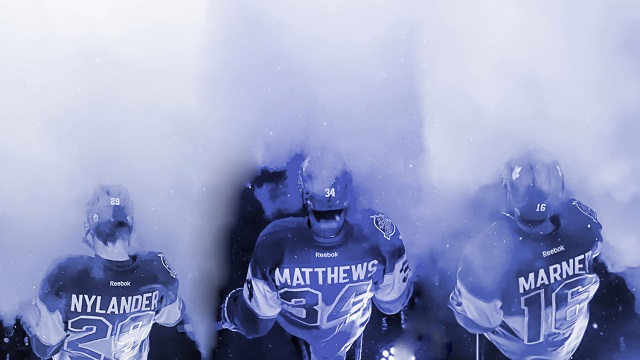
Who knew when we tuned in Saturday night to Hockey Night In Canada that we would be witnessing playoff history. Nay, not just playoff history but hockey history. According to what we saw and heard on HNIC just ONE TEAM played on Saturday. And they lost. It goes without saying that the team was HNIC’s beloved Toronto Maple Leafs.
Those of us who’d stuck with the telecast all evening could’ve sworn there was another team on the ice in black and gold. Rumour has it they were the Boston Bruins, but don’t quote us on that. Also, take it as a rumour that Boston’s 3-1 win gave them a 3-1 lead in games over Toronto heading back to Boston for what most expect will be the coup de grace for the blue and white. Again.
But when time came to discuss the game afterward the Toronto-based panel told us that the Leafs had beaten themselves. Yes, in some hockey version of metaphysics Toronto had transcended the third dimension. The Bruins were like The Fugitive, lurking far out of sight. Brad Marchand had had nothing to do with breaking up Toronto’s neutral-zone speed nor Charlie McAvoy clearing the front of their net. Jeremy Swayman, who he?

Instead the talking heads dissected the loss in shades of blue.
For those who were washing their hair or another vital task on Saturday, the Leafs had more story lines than a season of Curb Your Enthusiasm (insert your joke here), They finally got their migraine-afflicted star William Nylander back in the fold before a delirious Scotiabank crowd who’d probably paid about a $1000 a ticket to attend. But their star sniper Auston Matthews (allegedly) had food poisoning or a gall stone or a tee time next week back home in Scottsdale. Hard to say.
There was also a goaltending controversy, a Mitch Marner controversy and a Keith Pelley controversy (more on MLSE’s new CEO in a moment). And the, you know, 1967 thing. Despite the hysteria of their long-suffering fans at puck drop, postgame analysts hinted the Leafs seemed to be disinterested. Or, to those who actually watched the game, they were schooled by a better Boston team.
By the middle of the second period, despond and a 3-0 deficit had settled on the Leafs. Despite being the ONLY TEAM on the ice their well-compensated stars were bitching at each other on the bench. While Matthews looked glumly at his pals, Marner had a hissy fit throwing his gloves to the floor. Nylander lip-synched a rebuke to Marner along the lines of Grow up, this ain’t junior hockey. Did we say the crowd booed them off the ice after the second period? Yeah, that too.

Which led mild-mannered Kelly Hrudey to scold Marner for a bush-league behaviour in the break. Remember, Hrudey’s the nice guy on the HNIC panel. Where others see an alligator chomping on their leg Kelly sees a chance to get up-close with nature. So the rebuke for Marner was incendiary. By the time they dropped the pick for the third period you’d have thought Bob Cole wasn’t the only person to pass away this week. Gloom.
Making matters worse, Matthews was nowhere to be found. (According coach Keefe, the doctors had pulled him from the game. Whatever.) When the contest ended with a Toronto loss, the postgame chatter was once more obsessed with Toronto’s failings, as if another team were not having its way on the ice. Where was the effort? Where was the intensity promised when Leafs management spread dollars like Easter candy among its Core Four?
Kevin Bieksa, typically the most salty one on the panel, reminded everyone there was a Game 5 Monday and that 3-1 leads have been overcome. But with Toronto’s success in comebacks being nil he sounded like a guy trying to sell you a penny mining stock.
The dressing-room afterward was mint. “You know what, that’s just the way we are,” Nylander said. “I mean we expect a lot from each other, and we love each other.”
“I don’t think there’s any (frustration),” Marner added unconvincingly. “We’re grown men. We were talking about plays out there that we just want to make sure we’re all 100 percent on and know what we’re doing… We’re not yelling at each other because we hate each other.”
Chris Johnston of The Athletic called it the end of the Maple Leafs as we know them. “They’re making more mistakes at five-on-five, they’re soundly losing the special-teams battle, and they’ve transformed from being one of the NHL’s best offensive teams in the regular season to one that can’t score more than two goals per night in the playoffs. Wash, rinse, repeat.”
Coach Sheldon Keefe, whose shelf life has about 60 minutes left, was enigmatic in the face of cruel destiny. “You can question a lot of things; you can’t question the effort,” he said.
He’s right about one thing. When this first-round ends in ignominy there will be plenty of questions from Pelley, newly installed at the top of the MLSE pyramid. Such as, why should I keep this management team that teases Waygu beef in-season but delivers ground chuck in the playoffs? It’s long been said that the league the Leafs have been built for doesn’t exist in the postseason. So why keep pretending it does?
For those not in the know, Pelley has spent the last few years dealing with the Saudi’s LIV golf enterprise in his role as CEO of what used to be known as the European Tour. (Insert your barbarism reference) So he’s used to dealing with nasty situations.
Maybe his first act on the Leafs file is reminding everyone that two teams play each other in the playoffs, and it might be a good idea to learn from what the winners are doing.
Bruce Dowbiggin @dowbboy is the editor of Not The Public Broadcaster A two-time winner of the Gemini Award as Canada’s top television sports broadcaster, he’s a regular contributor to Sirius XM Canada Talks Ch. 167. Now for pre-order, new from the team of Evan & Bruce Dowbiggin . Deal With It: The Trades That Stunned The NHL & Changed Hockey. From Espo to Boston in 1967 to Gretz in L.A. in 1988 to Patrick Roy leaving Montreal in 1995, the stories behind the story. Launching in paperback and Kindle on #Amazon this week. Destined to be a hockey best seller. https://www.amazon.ca/Deal-Trades-Stunned-Changed-Hockey-ebook/dp/B0D236NB35/
Bruce Dowbiggin
Come For The Graduate Studies, Stay For The Revolution
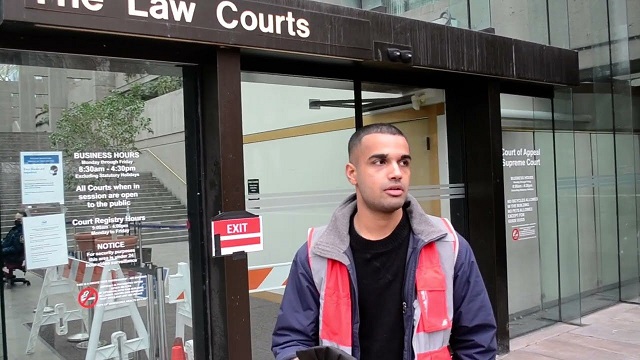
Just In: The Trudeau government intervenes at last minute to save a convicted climate agitator from deportation. The Pakistani co-founder of Save Old Growth— who first came to Canada in 2019 on a study permit— has been arrested at least 10 times and convicted of mischief. Zain Haq was due to be deported to Pakistan on Monday.
Despite a judge’s ruling denying his last hope of staying , Haq got a call from his Liberal MP’s office saying he gets to stay in B.C. after all. Good, because we’d hate for him to feel oppressed by the country in which he’s squatting. The news thrilled the nepo babies who have B.C. by the throat.
So Haq goes from unrepentant jerk to Christ crucified. Naturally. Victim politics have become the animating impulse in Western society. Attaching yourself to a forlorn cause like Haq is grounds for beatification And make no mistake, there are legions in identical little tents on campus quads who are cheering a non-Canadian defying The Man.
To generations brought up on the travails of feminist oppression, climate degradation, indigenous grievance and gender dysphoria there is nothing so sacred as a victim is all his purity, crushed by the Great White Satan of western culture. Haq is just the latest in a police lineup of wobbly performance artists taking a rhapsodic bow before the Liberal/ NDP/Green clique. While thumbing his nose at Canadians.
That’s why the current fetish for Palestinian outrage has such legs as it spreads across campuses and governmental buildings in the West. Anyone (but a white, straight male) can apply for the designation of victim. Join the party! And what a model it is! While many have tried to emulate them, none have managed the nihilist hat trick of violence, obstinacy and craven guilt quite like the Palestinians who’ve been pushing this agenda since the 1972 Munich Olympics.

Having eschewed frontal military attacks on Israel and western targets as ineffective, the PLO and its successors discovered that the more grisly the attack, the more black their message — in Munich they massacred 11 Israeli athletes— there was a segment of leftist Western culture that couldn’t get enough of their heinous tactics. (Stephen Spielberg’s 2005 film Munich pitied his fellow Jews killed in Munich but concluded that all this revenge stuff was a dead end.)
Huh. Their Arab neighbours want nothing to do with Arafat’s Children. Egypt has a wall preventing Gazans from entering their county, Jordan has expelled them for counter-insurgency, Saudi Arabia ignores them. Only Qatar offers refuge. And then only to the billionaire kleptocrats who run Hamas from penthouses in Doha.
The Oct. 7 massacre is just the latest in this dance of death with western liberals. People of a certain age will recall the Marxist-besotted Vanessa Redgrave brandishing a Kalashnikov while dancing with the PLO and its rascally leader Yasser Arafat. Her 1977 film The Palestinian was an orgy of guilt and hatred toward Israel. She’s had plenty of imitators in the media ever since. In 2021 over 100 actors— including Richard Gere, Claire Foy, Tilda Swinton, and Susan Sarandon— slammed the terrorist designation of Palestinian “rights groups”.
The same apologists are now saying that, sure, Oct. 7 went a little too far, but Palestinian repatriation means a few eggs are going to get smashed in the making of a terror state. They want a cease fire with good taste.

Were the PLO successors in Hamas and Hezbollah able to articulate some coherent vision of the future beyond slaughter then these western struggle sessions might seem justified. It’s no surprise that Arafat was the epitome of “never misses an opportunity to miss an opportunity” in negotiations. If there’s one constant in the multiple denials of treaties with Israel it is their unflinching demand that Palestinians throw every Jew they encounter into the Mediterranean on a march from “the river to the sea”.
The implacable marriage with extreme violence and racial hatred is their one and only position. Non-negotiable. None of this has any effect on the hot-house Marxists and anarchists who’ve set up shop in the universities and colleges of the West. In their protected status among the leafy tendrils of the Ivy League, a little brush with terror seems to titillate them. Occupying the quad in identical tents suppled by unnamed international groups dedicated to the overthrow of capitalism is their bougie weekend of roughing it in the bush.
Most probably wish they could experience a little of the martyrdom like the Palestinians (a gentle martyrdom naturally) or at the very least a cinematic clash wth authority such as their parents experienced at the hands of Chicago mayor Richard Daley during the 1968 Democratic convention. A tender tussle covered by their parents Medicare.
Who will stand up to these playtime antisemites? Alas, the grownups in the schools administration and in governments are cut from the same cloth. Having created safe spaces from micro aggression on their campus , they excuse the youthful exuberance of their students. (If your politics are radical, that is.) Like president Joe Biden they do the suck-and-blow of modern debate. They decry antisemitism while cautioning that we just don’t understand the depths of Palestinian oppression. Evan as students call for a new Holocaust.
Having it both ways with Hamas means a one-way invitation to more chaos. Because there is no agenda beyond the performative terror extolled by demonstrators against Israel there is no way to rationally critique Hezbollah or Hamas. At least the Nazis proposed some freakazoid homeland for their people as they heartlessly slaughtered anyone who got in their way.
So it all becomes mob mentality packaged for feckless media. The Hamas doctoral groupies don’t demand anything from Hamas beyond their faux-serious chants and designer kaffiyehs in the House of Commons. No doubt Zia Haq will be joining them again soon in the struggle. If Stephen Guilbeault can go from criminal to cabinet, Canada is wide open to him now.
Bruce Dowbiggin @dowbboy is the editor of Not The Public Broadcaster A two-time winner of the Gemini Award as Canada’s top television sports broadcaster, he’s a regular contributor to Sirius XM Canada Talks Ch. 167. New from the team of Evan & Bruce Dowbiggin now for pre-order: Deal With It: The Trades That Stunned The NHL & Changed Hockey. From Espo to Boston in 1967 to Gretz in L.A. in 1988 to Patrick Roy leaving Montreal in 1995, the stories behind the story. Launching on paperback and Kindle on #Amazon this week.
-

 Business2 days ago
Business2 days agoOttawa’s capital gains tax hike—final nail in ‘business investment’ coffin
-

 Automotive2 days ago
Automotive2 days agoCanadian interest in electric vehicles falls for second year in a row: survey
-

 Alberta1 day ago
Alberta1 day agoCanada’s postal service refuses to help with Trudeau’s gun ban buyback program: report
-

 COVID-191 day ago
COVID-191 day agoPeckford: Hallelujah! Supreme Court of Canada to hear Newfoundland and Labrador charter case
-

 Alberta20 hours ago
Alberta20 hours agoAlberta’s vision for passenger rail
-

 Alberta2 days ago
Alberta2 days agoAlberta threatens to fight Trudeau government restrictions on Canada’s plastics industry
-
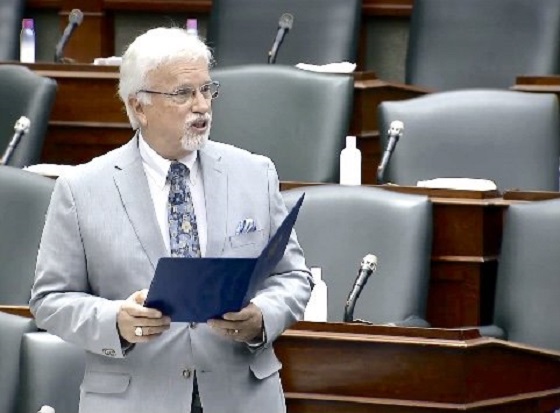
 COVID-191 day ago
COVID-191 day agoFormer Canadian lawmaker has no regrets about refusing COVID shot despite losing his job
-
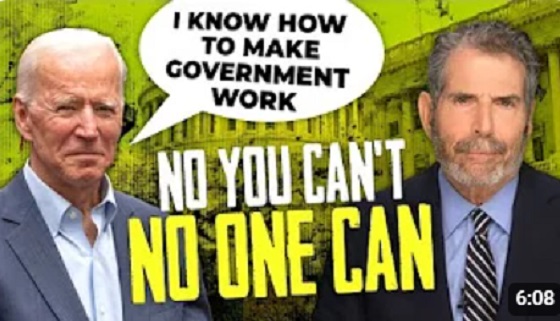
 John Stossel22 hours ago
John Stossel22 hours agoWhy Biden’s Just Wrong: NO ONE “Knows How to Make Government Work.”








